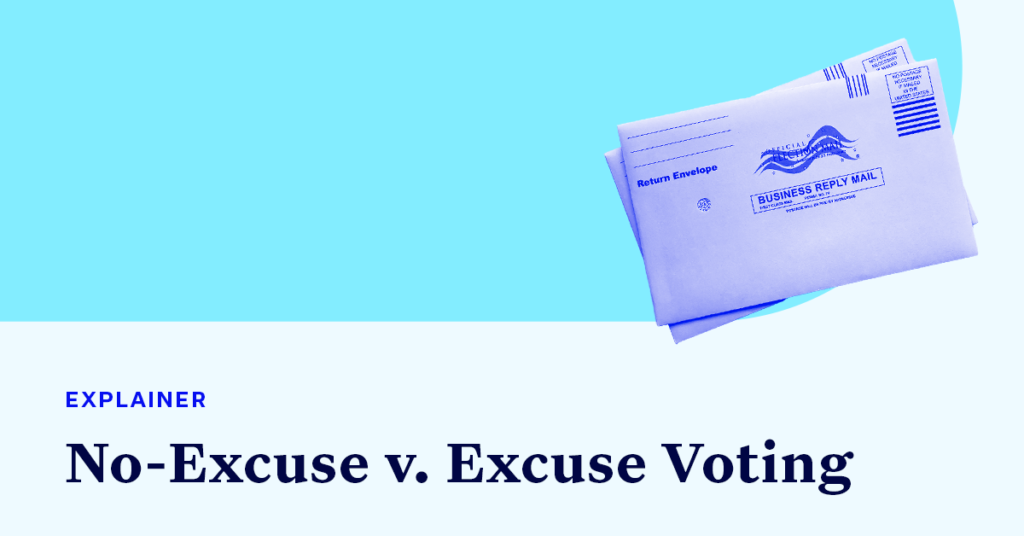Am I Eligible to Vote by Mail?

Once you have registered to vote, there are a number of ways to cast your ballot, including early voting and voting on Election Day. Another option in most states is “vote by mail” (VBM) or “absentee voting,” where the state sends you a ballot in the mail. Depending on your state, you can return that ballot either in the mail, in a ballot drop box or at an in-person voting location.
One important rule to be aware of when considering whether to absentee vote is if your state requires that you have a specific reason or “excuse” for absentee voting. States that require you to have a specific reason to vote by mail use what is called “excuse absentee voting,” while states which let anyone absentee vote have “no-excuse absentee voting.”
Every state has its own rules and excuses, and the difference between excuse and no-excuse absentee voting is even more complicated in 2020 due to COVID-19.
Here are some key differences to be aware of:
No-Excuse Absentee Voting
Anyone who wants to receive a ballot in the mail can request one. If you want to vote absentee in a no-excuse absentee state, you should receive your ballot in the mail once you have requested one. Depending on your state’s rules, you can then return the ballot either in the mail, in a ballot drop box or at a voting location. Even if you have requested an absentee ballot, in most states, as long as you have not returned it or put it in the mail you can still vote in person either during the early voting period or on Election Day. This is a helpful option if you do not receive your absentee ballot on time or are worried about your ballot arriving at your election office before the deadline. Some states that required an excuse in previous elections now have no-excuse absentee voting, so make sure to check your state’s vote by mail rules.
Excuse Absentee Voting
You must have one of the accepted reasons for using an absentee ballot. Examples of acceptable reasons may be that you will be out of the state or county on Election Day, or that you have an illness or disability that prevents you from going to the polls. Some states have many acceptable reasons, while others are very limited. Depending on your state, you may simply need to complete a check-box on your request form for one of these reasons or provide documentation to prove that you meet one of the reasons for voting absentee. Many states have also altered their rules on absentee voting due to COVID-19, so it is important to check your state’s rules even if you were not eligible to vote absentee in the last election. Make sure to check your state’s absentee voting excuses.
So, what do you do if you (1) live in a state that has excuse absentee voting and (2) do not have one of the acceptable excuses for voting absentee in your state?
You have to vote in person. If you want to avoid lines and minimize contact with others, one of the best ways is to check if your state has early voting and vote before Election Day. Check what early voting options are available in your state today.
Now that you know the main differences between no-excuse and excuse absentee voting, make your plan to vote and vote EARLY!